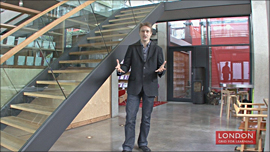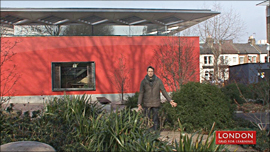KS3 Curriculum Links
Geography: Environmental interaction and sustainable development 1.6b
Explore sustainable development and its impact on environmental interaction and climate change.
Science: Practical and enquiry skills 2.1c
Plan and carry out practical and investigative activities, both individually and in groups.
Science: The Environment, Earth and Universe 3.4c
Human activity and natural processes can lead to changes in the environment.
Key words
Thermal mass: a building’s ability to retain heat that it has absorbed during the day and to release it at night. In this country buildings that use their materials to stay warm in the colder weather and cool in the warmer weather use less energy and help protect the environment. The ability to absorb warmth during the day and then release it during the evening when the weather is cooler is called “thermal mass”.
Durable: long-lasting.
Insulation: the ability of a material to prevent the passage of heat. Materials therefore have an impact on how much heat the building retains and loses.
Re-use: to use old materials for new purposes.
Recycle: to break down old materials and use their components to manufacture new elements.
Activity
Create a worksheet: Devise a Top Trumps card template for materials’ sustainability based on the one found here. Use the following categories: Durability - Insulation factor - Energy required to manufacture the material - Energy required to transport the material from source to building site - Possibility of recycling or re-using the material.
Materials: A5 paper, crayons, pens, one A1 sheet of paper, top trumps blank cards.
Steps:
- Thought shower as a group where each of these materials might have come from or been made: wood brick, metal, stone, glass.
- Ask students to consider what properties of materials influence the impact of the building on climate change. Their list should include the factors on the Top Trumps cards:
- Durability.
- Insulation factor (thermal mass).
- Energy required to manufacture the material.
- Energy required to transport the material from source to building site.
- Possibility of recycling or re-using the material.
- Now give each pair a Sustainable Material Top Trumps card.
- Students should explore the building and record the different materials they find: timber, concrete, glass, metal, plastic, brick, ceramic. They should tally the number of spaces in which they find each material to create a material profile of the building.
- In small groups, ask students to feedback the materials they found and how often. Which material is used the most often in the building?
- In pairs students can complete the top trumps cards.
- When they have finished, bring the group together and take a vote on each sustainability category to find the most popular answers.
- Explain to students that it is often a fine balance of what makes a material choice sustainable or not (for example wood that is sourced locally and untreated therefore using little energy for transportation and manufacture might be less durable and therefore need early replacement decreasing its sustainability value). The Top Trumps cards should reflect this and the material with the highest score should be the most sustainable one. Which one is that?
Activity Continued
- Explain that the building’s sustainability in terms of choice of materials depends on the most sustainable material being used the most often. In pairs students should look at how sustainable the most common material is.
- Ask the group to rate (with their bodies by standing in a particular corner of the room) how sustainable they think the building is in terms of the choice of materials. What do they think would make the material choice more sustainable?




